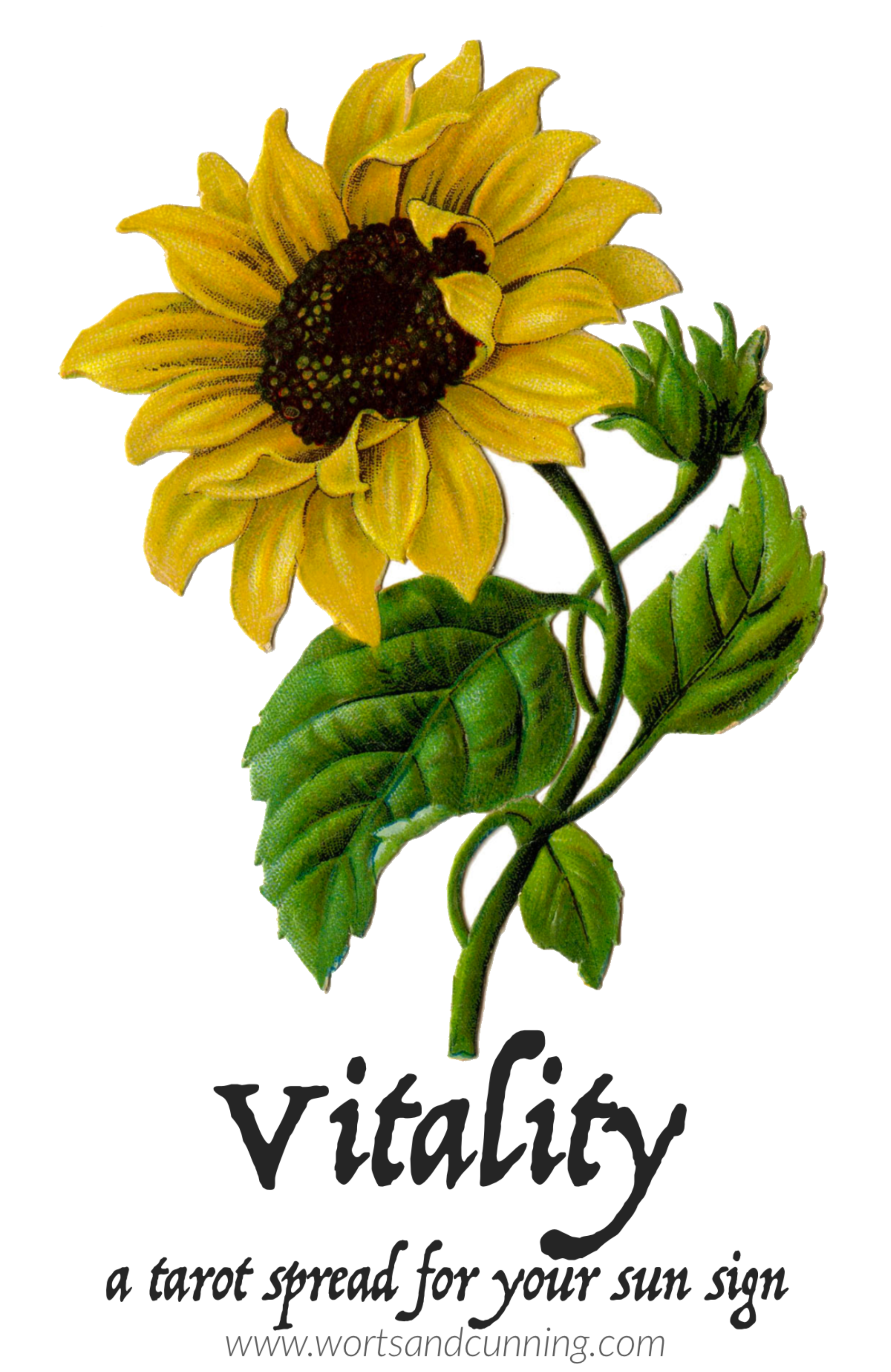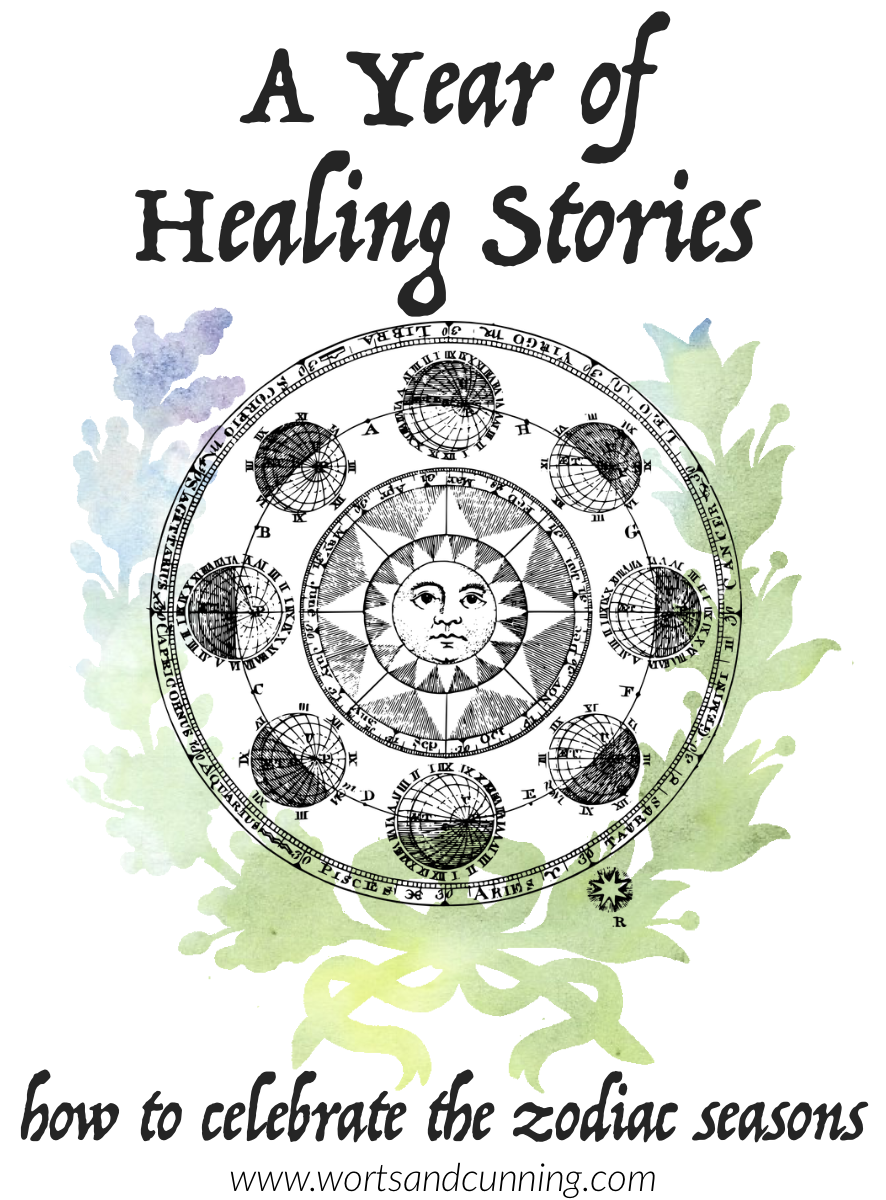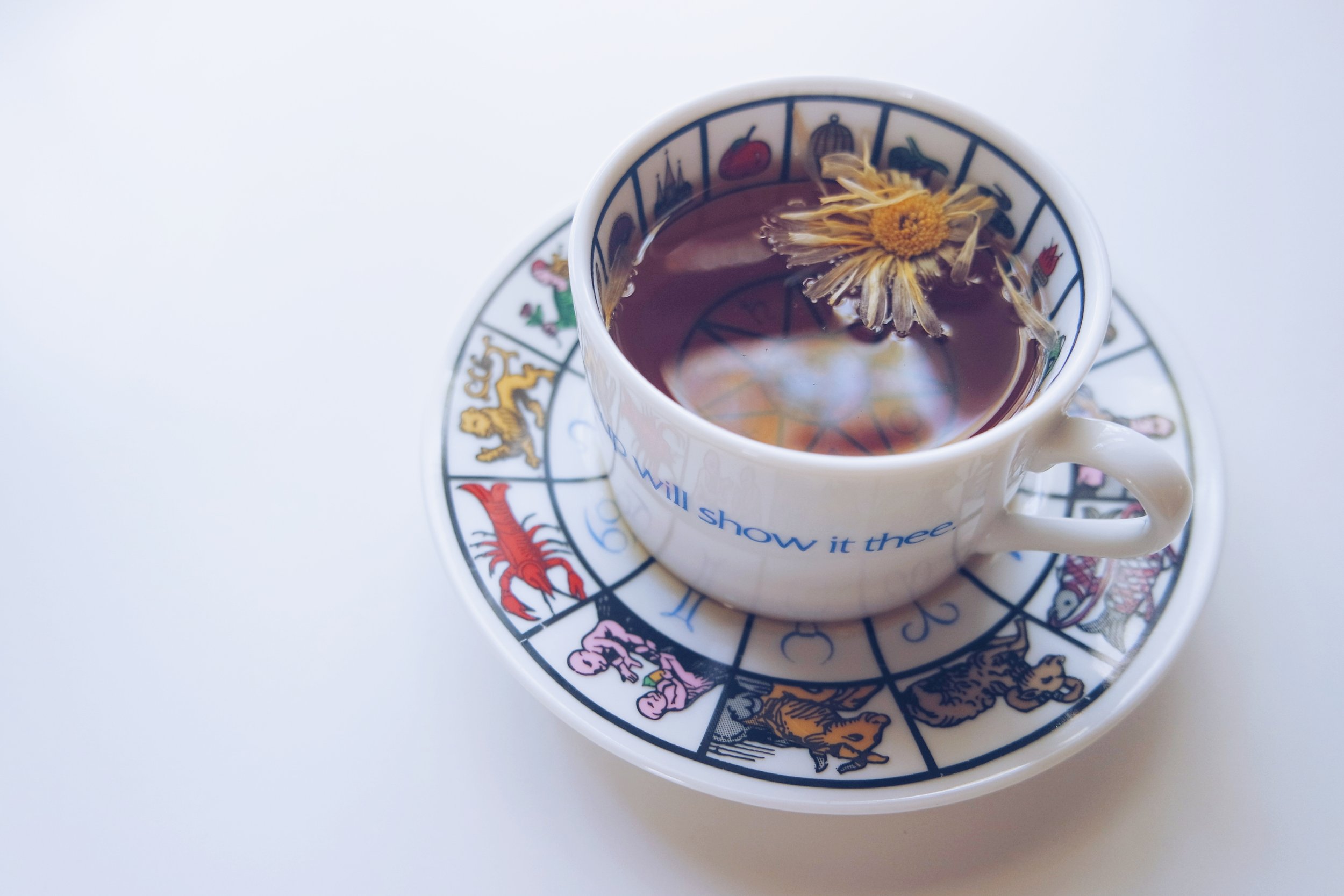Vitality: A Tarot Spread for Your Sun Sign
The Moon and our Moon sign is something I've explored a lot as lunar-focused rhythms of astrology and healing are ones that I find interesting and useful. The Moon, though, is just one part of the story of astrology and in western astrology the Moon forms an important triad with our Sun sign and our Ascendent (also known as our Rising Sign).
There are whole books dedicated to exploring the meaning of the Moon, the Sun, and the Ascendent, drawing upon thousands of years of tradition, but the metaphor I've found most useful in understanding these aspects of our birth chart (and ourselves) is to start by imagining a river.
The water of the river represents our Sun sign. How much or how little water there is, the speed and velocity of the water, what the water is able to carry by the strength of its flow, all represent our inherent energy. Within medical astrology the Sun helps us to understand our baseline energy and the way that our vitality most easily manifests. Our Sun sign also helps us to understand where we are prone to burnout, exhaustion, and overdoing it. Our energy is shaped by much older sources of water from high up in the mountains (i.e. our ancestry and genetics), but there is much more that goes into the energy of who we are and our willpower beyond inherited biology. Some people's energy is more like a slow and ambling river, wandering through the countryside. Other people's energy is wild and rushing, moving quickly through the landscape. There is no "good" or "bad" energy and, while there is a pace that our energy can feel most comfortable in, our energy is changed and shaped by our life experiences.
The banks of the river, the rocks in the water's path, the fish and river life, and everything that affects the flow of water is our Moon sign. Our Moon represents the ways that our energy is shaped not only by our internal workings (i.e. our mental physiology, our nervous system, our emotional experiences), but external factors, especially those experienced in our early years (i.e. the type of family culture we were raised in). Our energy is shaped by and shapes our environment. There are riverbanks that feel familiar and suddenly a boulder drops into a quiet part of our river path, disrupting our flow. The boulder shapes the flow of the river (i.e. a new conscious awareness), but the water also shapes the boulder over time, too. There might be two people who have energy that is quick and rushing, but one person's river is relatively smooth and calm on the surface, leading out to the sea, while another person's river is full of rocks and jagged turns, ultimately dropping over a cliff to create an incredible waterfall. All of our rivers are shaped by the circumstances we were born into, culture, society, and our lived experiences. In this way, the Moon represents how our inherent energy (Sun) is shaped into consciousness, helping us to form our own sense of what feels supportive, comfortable, and true to ourselves as well as what feels unsettling and unsafe.
Finally, our Ascendent is the spirit of the river itself, representing how we want to be perceived and how we are perceived. A group of people will visit a river and each one may have a different perceptive experiences. Some may take delight in the wild, frothy noise of a rushing river, while others might look out and see a dangerous, unstable energy that must be approached with caution. The spirit of the river might want to be seen as a wild and untamed thing, keeping people at a distance, because this is how they have learned to protect themselves and it has kept them safe from undue interference. Or the spirit of the river might try to create soft riverbanks that feel inviting and gentle, working hard to reshape their rocky edges, wanting to be known as a welcoming place. The spirit of the river is hindered and aided by its inherent flow (i.e. it's Sun sign energy) and instinctual expressive shape (i.e. it's Moon sign energy), but throughout life will shift and change as they engage with the world and the world engages with them.
In other words, our Sun sign represents our energy and vitality, our Moon sign represents expression of our energy, including our personal stories and memories, and our Ascendent represents the engagement of our energy. The Sun, Moon, and Ascendant are shaped by their placement in our chart and their relationships (i.e. aspects) to other planets and celestial objects, but getting a sense for these three parts of your birth chart is a really good way to start to understand your personal astrology.
So with our mini astrology lesson done, let's look at your Sun sign with a tarot spread that can help you to understand your inherent energy, support systems you might consider, and pitfalls to avoid.
Vitality: A Sun Sign Tarot Spread
Begin by pulling out the Sun card from your tarot deck and set it out at the top of your reading space. If you like you can place candles around it and build a solar altar full of items representing Sun energy and your own Sun sign. You might include solar plant allies like Calendula (Calendula officinalis), California Poppy (Eschscholzia californica), Sunflower (Helianthus spp.), Chamomile (Matricaria recutita), and St. Joan's Wort (Hypericum perforatum). Focus on creating a space that feels welcoming to your energy.
Card 1: Radiant
This card describes your inherent energy. It can be helpful to observe the elemental signature of the card. Fire and Air cards, for example, tend to represent energy that is quick to manifest, though might not be the most sustainable or prone to last, while Water and Earth cards can represent energy that is slower to move and manifest but with greater longevity and endurance. For those of you familiar with the astrological correspondences of the tarot, you can draw on this knowledge, too.
Card 2: Protected
The characters and landscape of this card can help to describe the sort of people, places, and situations that your energy feels most supported and able to flow easily through. Pulling the 10 of Cups, for example, may represent the way that you feel most recharged and able to act from a place of steady energy when you are surrounded by good friends and family. In other words, an energy that feels protected and nourished by the company of others. Tell a story of how you want to be protected.
Card 3: Hindered
This card highlights the situations, people, and experiences that hinder, harm, and/or drain your energy. In many ways, this is an "obstacles" type card, just on a grander scale. Sometimes this card represents a very present situation that is obstructing your energy, other times it can refer back to an event that has had a lasting experience on how you change the shape of your energy to meet an expectation (making others feel more comfortable, trying to protect yourself the best way you know how, and so on). Often this card represents an ongoing type of experience, person or situation to be mindful of. Realizing, for example, that while many of your friends love a big weekend out, your energy needs more downtime at the end of the week to be able to recharge if you pull the Four of Swords.
Card 4: Hidden
This card gives us a peek into an aspect about our energy that you may only be coming to understand or is still well hidden from you. Reasons for why a part of our energy may be hidden from you can be many including being taught to hide your energy away, experiencing a significant life event that brought this aspect of your energy to the forefront of your consciousness, and just the natural change that happens through your own growing and changing. At first this card might be difficult to interpret and that's ok - it is a card that is meant to give you a glimpse, not a whole explanation, and it might be the first time you're getting a look at this particular aspect of your energy. Other times it can affirm what you've been exploring about yourself and what you've learned so far. It might be a card that you meditate on for the next lunar cycle if you're feeling particularly intrigued by its meaning.
Card 5: Unencumbered Joy
The traditional Sun card imagery from the Smith Waite tarot shows a joyful child, unencumbered in their energy and safe in their self-expression. It is how we all deserved to be loved and cared for as children. This card represents the ways that you feel unencumbered in your joy, freely able to express your energy.
Of course, it is not unusual for a challenging card to show up here and it can represent a few things. First, there might be an image or symbol on a card that is traditionally interpreted as challenging but that brings an immediate sense of joy to you - it's more than ok to focus only on that part of the card. Second, there might be an overwhelming feeling that makes it hard for you to connect with your joy - shame, doubt, fear, and so on - and this card can be a place to recognize the current story you hold about your ability to access joy.
A simple act of magick you can perform when pulling a challenging card in this position, either during or after your reading, is to take a challenging card in this position and to cover it with another card, of your choosing, from your tarot deck that represents joy to you. Visualize the challenging card being buried deep in the earth as a seed of experience that has risen to the surface and transformed into something new, as represented by the card of joy you chose. Our roots shape us, but they are not our fruit - choices and possibilities, kind-hearted interventions, are always present to us in our growth.
☀️
While there are so many techniques of discernment and knowledge-gathering within astrology, just becoming familiar with your Luminaries and Ascendant will open up a significant gateway to the part of existence that makes up who you are. If you want to learn more about the signs in astroherbology, including the healing qualities of your Sun sign, come this way. If you’re looking for a reading for your Moon sign, find it here, and here is the post for your Ascendant.
For those of you intrigued by the connections between plant allies, the tarot, and healing practices, you might enjoy The Tarot Apothecary.
The great strength of astrology in healing work is providing us language to tell our story from a more empowered and inspired place which is what I hope this Sun-sign inspired tarot spread helps you do. Remember, the myths are still being written, as they always have been, by people like you and me, so keep telling the stories that need to be told.
This post was made possible through patron support.
❤︎ Thanks, friends. ❤︎




















